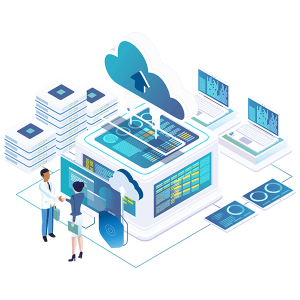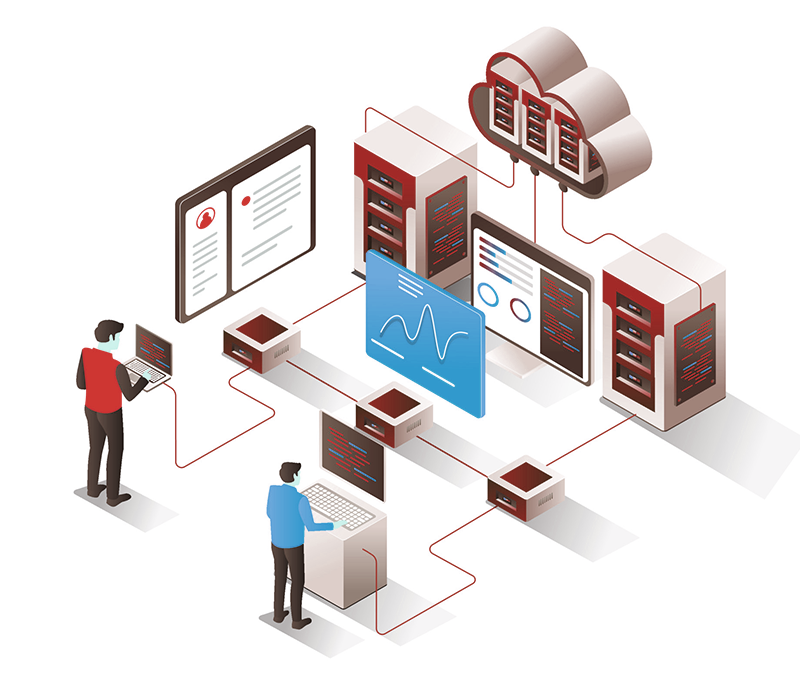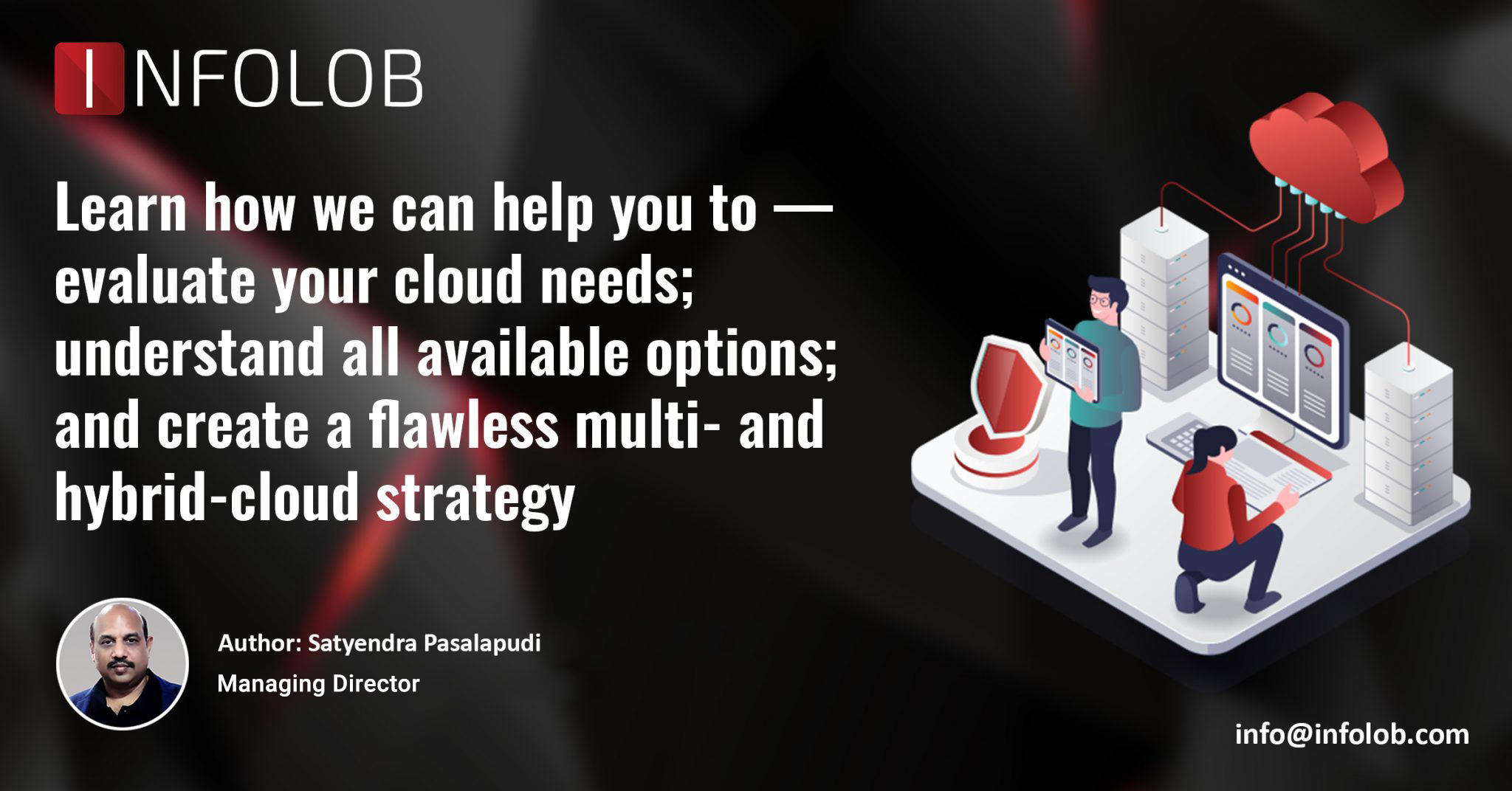Modernizing legacy processes and systems have escalated into a more urgent challenge for tech leaders, as it is a necessary foundation for future innovation, agility, resilience, competitive edge, and new revenue streams. This is why businesses are investing more aggressively in the areas that enable them to extract the most out of new technologies and processes in the post-pandemic era. And unquestionably, cloud adoption is one of the topmost priorities for CTOs/CIOs in that direction.
But unfortunately, while nearly half of all businesses have catalyzed their transition to the cloud since COVID-19’s outbreak, most have struggled to fully realize it. For instance, in a recent McKinsey report – 8 out of 10 CIOs have not achieved the degree of agility and business advantages they sought from their new environments[1]. Furthermore, many businesses that successfully transitioned their workloads to the cloud were only able to unlock agility equivalent to their counterparts that transitioned at a slower pace.
successfully transitioned their workloads to the cloud were only able to unlock agility equivalent to their counterparts that transitioned at a slower pace.
Hence, to remain competitive, technology leaders need to keep enhancing their organization’s cloud strategies, to guarantee that they possess the required organizational design, skill development, and processes in place to maximize value. Therefore, how about a roadmap to cloud adoption that addresses all these areas of concern while maximizing efficiency and returns? Let us find out!
PHASE 1: Evaluating your cloud maturity
To identify where your cloud maturity lies and where it needs to go, ask yourself the following questions, or engage Infolob’s Free Cloud Assessment service:
- Modernization basics: Is your management auditing proposals for cloud services? What is the level of dedication have they offered already for cloud adoption?
- Hardware infrastructure: Are you looking for everything on-site in a data center, or a combination of the on-premises and cloud (hybrid model), or completely in the cloud/multi-cloud environment?
- Data: Is all your data on site or in the cloud (or perhaps in a mix)?
- CI/CD: Are your introducing new code and deploying new applications automatically, manually, or using both?
- Visibility and monitoring: How does your organization’s logging system work, including storage, aggregation, and quality control?
- Software: Are your applications hosted on a conventional web server, in the cloud, or both?
- Virtualization: Are you leveraging traditional bare metal systems, have gone all virtual, or taken a middle path?
It is also wise to set the standards at the industry level by discovering what all are your competitors doing? Has any regulatory consideration influenced how your data is managed? How extensive is your organization, and the pace at which you growing compared to everyone else in the industry? Responding to these questions helps streamline the building of a concrete, risk-proof, cost-efficient cloud migration plan.
PHASE 2: Knowing cloud migration and existing on-premises capabilities
Once you have decided to modernize using cloud, the next big thing in the pipeline is leveraging it to the full extent. But starting afresh is not an option since you have decades-old applications and processes supporting your organization. Hence, to be successful at fully leveraging the cloud, one needs to know which applications out of the stack is due a cloud modernization. Watch Infolob’s OCI migration methods and deployment options webinar video.
The ‘whats’ and ‘whys’ of cloud adoption
The specifics of cloud migration will always rely on your enterprise’s precise collection of applications, data, and objectives. Yet, following are some of the wider aspects to consider prior cloud implementation.
TECHNOLOGY: For exploring all the technologies used by an organization, they can either take top-down or bottom-up approach. In the top-down approach, businesses take a comprehensive view of the applications and systems set for cloud migration. Obviously, this requires considering dozens of individual components. On the other hand, a bottom-up view fosters businesses to explore all the pieces required to be migrated to the cloud. Compute components are often portable, and several clouds offer pioneering VM or container migration tools including Oracle Cloud.
STORAGE: Businesses are set to migrate file shares, archival storage, and plenty of storage systems, together with each and every retention policy. But this makes cloud migration a lot trickier. Beyond the quantity factor also, they need to consider the type of storage they require (e.g., file storage, object storage, or block storage), coupled with the kind of performance they wish while abiding by the budget.
DATABASES AND DATA WAREHOUSES: Migration of the two comprises modernization of your BI and reporting infrastructure, which is not always easy. Diverse systems rely on enterprise databases and migrating them demands moving out the systems as well. Many public clouds identify such challenges and offer some form of relief by making tools available for database migration that quickly ship your data to the cloud.
LOB SYSTEMS: Businesses need to migrate such systems at once, and it is ideal when no data loss or downtime is incurred. The middleware, which is often very easy to overlook, must also be migrated.
NETWORKING AND CONFIGURATIONS: While migrating VPNs, firewalls, and load balancers, businesses must not duplicate their on-premises setup as this is the chance to simplify network and security with a cloud-native approach.
IDENTITY MANAGEMENT SYSTEMS & MISC SECURITY SERVICES: The manner in which a business goes about identity and security on-premises can totally be different in the cloud.  And hence, is yet another opportunity to synchronize migration with modernization.
And hence, is yet another opportunity to synchronize migration with modernization.
MANAGED SERVICES: Many on-prem providers offer their management solutions to be used in the cloud at identical ease. Businesses get the chance to either capitalize on that or upgrade their management systems into a more powerful, functional, cloud-native solution. This involves:
- Configuration management
- Provisioning solutions
- Logging
- Patching/tuning systems
- Ticketing systems
DEVELOPERS ONLY: This part subsumes a business’ source control systems, their artifact repositories, their sandboxes, etc. Moving such components is simple enough, however, businesses are made to handle tons of data in the process.
How to go about maximizing cloud adoption?
Upon evaluating your firm’s existing position on cloud adoption, followed by discovering what needs to be migrated – it is time for an action plan. Following are some important considerations that can be made to ensure accelerated, full-scale cloud adoption with maximum returns.
GET A CLOUD IMPLEMENTATION PARTNER: We know tech people are innovative problem-solving entities. Once they decide to adopt cloud, the course can turn into an interesting challenge. Yet, it is always wise to seek outside help who has a history as a business technology enabler featuring tons of time-tested cloud migration methodologies. This is an effective way to secure your organization in case there are some loose ends in a cloud migration together with the potential to undo all the effort and capital investment.
SHARED INFRASTRUCTURE: Leveraging public cloud allows self-service provisioning and fosters teams to move more swiftly to generate value. Yet a bit of risk may bud from the standards that control cost, fence data, and boost manageability. Thus, prior to setting up a team in the cloud, it is appropriate to lay the groundwork for them to readily utilize.
USE OF RIGHT TECHNIQUES: There are several unique techniques usable for cloud migration, out of which a few of the widely adopted ones are listed below.
- LIFT-AND-SHIFT MIGRATION: It translates to cloud migrating workloads in their original form. In this, you choose a virtual machine and run it in the cloud without making any changes. You can even use lift-and-shift migration technique for a bunch of aging workloads – from which you only seek a few incremental advantages in the cloud. Additionally, lift-and-shift migration is highly effective for complete data center exits.
- LIFT-AND-OPTIMIZE: It is the next level of lift-and-shift cloud migration. In this technique also the application remains as-is, however, businesses replace proprietary servers with open-source. Or they containerize the workload to be deployed on a denser yet affordable host in the cloud. Lift-and-optimize migration usually introduces more advantages than the lift-and-shift. They still do it without having to pay down tech debt for the workload.
- MOVE-AND-IMPROVE: It features workload modification, which basically means that you begin with a lift-and-shift or lift-and-optimize cloud migration, however, with the aim to invest in modifications to the application for utmost cloud compatibility.
- IMPROVE-AND-MOVE: This method can help you get to the same place as move-and-improve, but the modifications are introduced to the application prior to migration. If viable, this method is highly recommended because the modifications are made at the start, instead of being downplayed.
- REBUILD-AND-REPLACE: Although less adopted, this method yields the most critical set of advantages. By rebuilding an application for the cloud, you capitalize on elasticity, scalability, and cloud-native services while making it easier for the edits to your workload to take effect.
- RETIRE-AND-REPLACE: Systems and applications that are aging, outdated, or less-suited for the cloud, retire-and-replace is their most suitable course of action. And although it is naturally challenging for any business to let go of a customized system but using SaaS cloud service model to find a match for your needs minus the intricacies of migrating the aging applications is quite reasonable.
There are pros and cons to each cloud migration method and businesses must determine which one should be applied for a particular workload.
TYPE OF CLOUD SERVICES NEEDED: For choosing the most appropriate version of cloud services also, it all comes down to what application investments need to be preserved and which ones can be replaced for a cloud-native counterpart. Please note that every decision has implications pertaining to cost, effort, delivery, and maintenance.
TRANSCEND FACE-VALUE WITH VERTICAL MIGRATION: Teams at your firm prioritize infrastructure layers, with storage, compute, and connectivity applications moving up the stack. That is because they own all these layers. Yet to guarantee unlocking greater value out of cloud adoption, move systems and applications vertically instead of the layers.
SYNCHRONOUSLY EVOLVE PROCESSES: Cloud migration demands rethinking budgeting, provisioning, and agreeability to changes. Maintain the spirit of what your principal processes aim but reimagine them to fit in the cloud.
FOCUS ON FULL-FLEDGED AUTOMATION: Repeatability and auditability have significant places in the cloud, translating to the need for enabling automation whenever possible. Therefore, whether you are up to scaling environments per usage, scanning deployed cloud services to identify non-compliance, or deploying code to production – full-scale automation is indispensable.
CLOUD DEMANDS MODERNIZATION OF SKILLS: Skill development is crucial for implementing a new paradigm for IT that is likely to impact your entire organization. Up front investments are required for upskilling your developers, architects, operators, product managers, project managers, business analysts, system administrators, and so on. Alternatively, you can take help from the certified cloud migration and management experts at Infolob.
PHASE 3: A take on hybrid/multi-cloud migration strategy and allied aspects
 Possibilities are that you (as an organization) are struggling with cloud adoption. Though you are aware of the endless business benefits and will soon be cloud-borne. However, carrying out an impeccable cloud implementation marked by maximized return, agility, competitive edge, operational efficiency, never-before collaboration, data security, etc., powered by cloud-native competencies – together with building a successful hybrid or multi-cloud migration plan is tricky and tiresome. Following are a few guidelines that can assist you in a major way.
Possibilities are that you (as an organization) are struggling with cloud adoption. Though you are aware of the endless business benefits and will soon be cloud-borne. However, carrying out an impeccable cloud implementation marked by maximized return, agility, competitive edge, operational efficiency, never-before collaboration, data security, etc., powered by cloud-native competencies – together with building a successful hybrid or multi-cloud migration plan is tricky and tiresome. Following are a few guidelines that can assist you in a major way.
ADDRESS DATA SILOS AS THEY HAPPEN: Irrespective of what storage selections you make, it is crucial to proactively look out for data silos in the firm. They come in multiple shapes and sizes, fully capable of hampering productivity. Conventional kinds of data silos comprise standalone relational databases, data warehouses holding semi-structured data, persistent disks, etc.
DODGE VENDOR LOCK-IN: Besides all the thoughts on how a vendor can better serve your business in the cloud, it is also advantageous to consider a CSP that offers flexibility of service without the risk of vendor lock-in.
KEEP A CLOSER WATCH: Cloud-driven systems are generally distributed and replicated horizontally. And highly scalable systems like these are also greatly complex that demand normal-than-usual coordination/integration. At each and every point of coordination/ integration is a prospective point of failure, corroborating the fact that cloud management, observability, and reporting are just as important as a successful, business-objective-aligned cloud migration – to keep everything under control.
CLOUD SECURITY: Nothing is more normal than the fact that moving a full-fledged operation from on-premises environment to the cloud can be a temporary breeding ground for security/compliance vulnerabilities. It is why a majority of cybersecurity and DevOps teams face dilemmas when a change is discussed – let alone a massive undertaking such as cloud adoption. Hence, always go for a vendor (and implementation partner) that features industry-leading security and compliance capabilities.
Final thought on maximizing cloud adoption
Let us quickly conclude based on the fact that migrating to the cloud and starting cutting-edge processes is a huge leap, but it is still the first step. To learn more or get a free one-on-one cloud consultation with a certified expert, please write to us at: info@infolob.com





